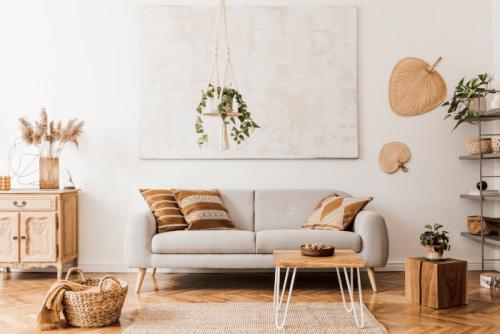Lighting Tips for Effective Interior Design

Lighting plays a pivotal role in interior design, shaping the ambiance and functionality of a space. Whether you're aiming for a cozy atmosphere in your living room or task-focused lighting in your home office, the right lighting choices can transform any room. In this article, we'll explore essential lighting tips to help you illuminate your space effectively and enhance its aesthetic appeal.
Understanding the Basics:
Before diving into specific lighting tips, it's crucial to understand the basic types of lighting used in interior design:
- Ambient Lighting: This provides overall illumination to a room and sets the general mood. It can be achieved through ceiling-mounted fixtures, recessed lights, or wall sconces.
- Task Lighting: Task lighting is focused on specific areas where activities such as reading, cooking, or working take place. Desk lamps, under-cabinet lights, and pendant lights are common examples.
- Accent Lighting: Accent lighting adds drama and highlights architectural features, artwork, or decorative elements within a space. It can be accomplished with track lighting, picture lights, or adjustable wall-mounted fixtures.
Now, let's delve into some practical lighting tips for effective interior design:
Layer Your Lighting:
Just like layering textures and colors, layering lighting creates depth and visual interest in a room. Combine ambient, task, and accent lighting to achieve a balanced and versatile lighting scheme. This approach allows you to adjust the lighting according to different activities and moods.
Consider Dimmers:
Installing dimmer switches gives you control over the intensity of light in a room, allowing you to customize the ambiance to suit various occasions. Dimmers are particularly useful in living rooms, dining areas, and bedrooms, where flexibility in lighting levels is desired.
Pay Attention to Color Temperature:
The color temperature of light affects the ambiance and perception of a space. Warm light (2700K-3000K) creates a cozy and inviting atmosphere, perfect for living rooms and bedrooms. Cool light (4000K-5000K) is ideal for task-oriented areas like kitchens and bathrooms, providing clarity and focus.
Balance Natural and Artificial Lighting:
Maximize natural light during the day by keeping windows unobstructed and using sheer curtains or blinds. Supplement natural light with artificial lighting sources to maintain consistency and functionality after sunset. Aim for a seamless transition between natural and artificial light to create a harmonious environment.
Highlight Architectural Features:
Use lighting strategically to accentuate architectural details such as exposed beams, columns, or alcoves. Directional spotlights or wall-mounted fixtures can draw attention to these features, adding depth and character to your space.
Ready to transform your space with expert lighting techniques? Explore the comprehensive Interior Design courses at one of the best Interior Designing Colleges in India like IIFD - Indian Institute of Fashion & Design and gain the skills to create captivating interiors that shine bright. Visit our website [insert link] to learn more and enroll today!
Conclusion:
Effective lighting design is an essential aspect of interior design, influencing the mood, functionality, and visual appeal of a space. By implementing these lighting tips, you can create a well-lit environment that enhances the beauty and functionality of your home. Remember to experiment with different lighting combinations to discover what works best for your unique space and lifestyle.
Advertise on APSense
This advertising space is available.
Post Your Ad Here
Post Your Ad Here

Comments